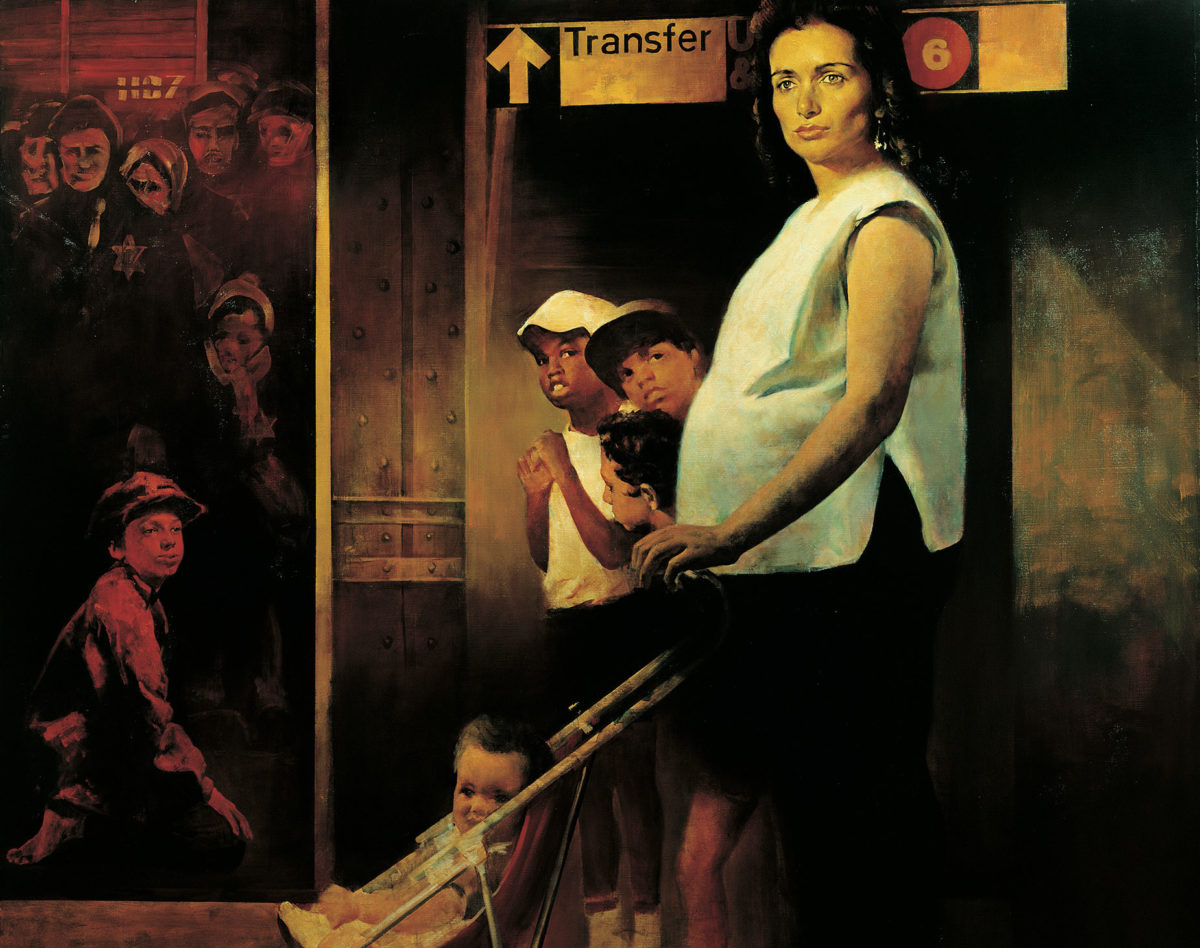
Featured Item

Holocaust victims and the art of survival
Art assumed a central role in helping many Holocaust survivors come to terms with their ordeal and share their harrowing experiences with the world. In their drawings, paintings, and sculptures, we don’t only have a testament to what happened, but also a warning for future generations.
“Many Holocaust survivors used the language of art to express their trauma and embrace life and hope,” said Liz Elsby, an artist and educator at Yad Vashem. “Many of them rebuilt their lives and captured what they had experienced.”
Elsby explored the art created by those who survived the Holocaust this past Monday, 8 February, in an exclusive webinar hosted by the Johannesburg Holocaust & Genocide Centre.
“The [post-war] period of Holocaust artwork tends to be looked at a little less compared to the art created during the Holocaust,” she said. “After the war, people asked what it meant to be a survivor.
“Students like to ask survivors what they did first after being liberated. They perceive it like a TV programme, believing there’s an end to the ordeal. In reality, it was a long and arduous road, and we see this in the artwork of survivors.”
Images created by artists such as Zinovii Tolkatchev, a Soviet artist who accompanied the Red Army forces that liberated the Auschwitz-Birkenau concentration camp, captured some of the euphoria of salvation.
“He captures people waving and smiling, celebrating the moment,” said Elsby. “That’s the way that many people think of liberation. That the gates opened, survivors greeted their liberators, and they went on to start a new life.”
This wasn’t always the case, as survivor Antek Zukerman wrote.
“The grief was never as great as on that joyous day,” quoted Elsby. “I wanted to weep, not from joy but sorrow. Suddenly, we were faced with the desolation of reckoning. What? Who? We had lived all the time with a sense of mission, but now? … It wasn’t easy to be the last of the Mohicans.”
Said Elsby, “For many, the moment brought questions: what was it all for? Why did we suffer? The first instinct for many was a fleeting moment of joy. Some were overwhelmed with despair; others were in utter disbelief. They were liberated, but not free.”
This was reflected in many art pieces at the time, illustrating that survivors had to grasp that while they had been suffering, life was going on outside. Images show people walking freely in the streets, disconnected from the suffering of so many others.
For some survivors, art expressed the euphoria of re-joining the world. Buchenwald survivor Jakob Zim, for instance, chose not to capture the horror of his experience, but the European landscape he could now be a part of once again.
Others, however, responded differently.
“David Friedmann writes about a sudden urge of artists to show what happened,” said Elsby. “It wasn’t enough to express joy, but that they could bear witness at last after having been unable to while in the camps. They wanted to draw what they went through.”
Often raw and unnerving, these paintings frequently show suffering victims, menacing oppressors, and a clear distinction between humanity and the inhuman. Penetrating expressions accuse perpetrators, artists often inserting their own sense of injustice into the image and asking how the atrocity could have been humanly possible.
“It was all very fresh,” said Elsby. “These people had just lost their families and had yet to rebuild their lives. Many of them used this as an impetus to draw what they went through. They’re saying, ‘This is the horror of where I was. This is what the world didn’t see and didn’t prevent.’”
The next notable movement in artwork dealt with yearning, loss, and longing, reflecting a nostalgia to return to places alive in memory only. As Elsby explained, many works showed the Jewish life of Warsaw and Vilna, the shuls, Jewish institutions, and communities that were no more.
“They expressed a sense of mourning, a need to remember,” she said. “They knew that these places were being replaced with something new, would be forgotten, and wanted to create an epitaph in their art. How do you really get over the loss?”
Guilt was also a central motif in much of the artwork that follows the war. Themes of identity play a central role, with artists trying to understand who they are now without their families and to live with the guilt of being alive. Abstract images, figures aged by horror, and images of wandering Jews are common.
This changed in the 1950s, however, when many survivors attempted to get on with their lives.
“Their bodies are healing, and they begin to trust in humanity again,” said Elsby. “They are trying to avoid dealing with what they have gone through, and don’t want their new families to know about the past. Again, they struggle with their identity, and we find them sometimes transported back to their experiences.
“The trauma won’t go away, and as much as you try to rebuild your life, everyday things can trigger you and take you back.”
Memory also changed, Elsby said.
“After a period of wanting to testify, memories begin to soften and become misty by the eighties. Images of Majdanek by Israel Kantor show something less menacing, with green fields, no people, no horror. Memory has softened.”
In the 1960s and 1970s, religion also featured frequently, with Christian iconography often included as an indictment against those who professed love and concern in the name of Christ but did nothing to help suffering Jews.
“Some survivors take years to express themselves, painting in the 1990s only,” said Elsby. “As we move further away from the Holocaust, there is more of a tendency to look at it as less of a historical event with dates and to focus instead on names and places. We see a desire to bring back humanity.”
These works of art are inspiring, she said.
“With so much pain, anguish, and memory, they could somehow still create and wanted to join the world of the living,” she said.
“As Tamara Deuel Sternberg wrote, ‘I feel that by my art I am helping to transfer my experiences and feelings to others to help prevent this from ever happening again. Every individual who survived that other world has a duty to leave documentation, art, music, and personal stories behind that future generations will never forget.’”










